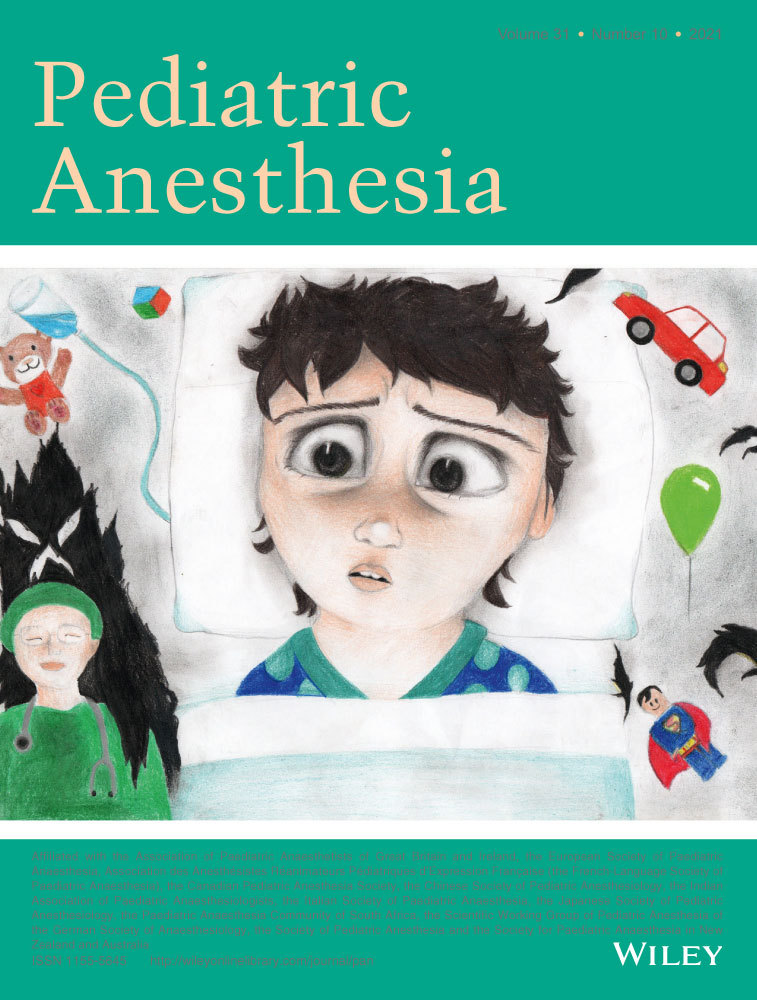Relationship between pre-incision Pupillary Pain Index and post-incision heart rate and pupillary diameter variation in children
Funding information
None.
Abstract
Background
The Pupillary Pain Index is a recent pupillometric index designed to assess the level of analgesia under general anesthesia in children and adults. If analgesia is inadequate, acute nociceptive stimuli such as skin incision may induce significant hemodynamic disturbances.
Aims
Our aim was to investigate the potential relationship between pre-incision Pupillary Pain Index and heart rate increase following skin incision in children.
Methods
This was a prospective, non-randomized, registered pilot study. We included children undergoing surgery under general anesthesia. Pupillary Pain Index was assessed 2 min before skin incision. Then, heart rate maximal variation (ΔHR) and pupillary diameter maximal variation (ΔPD) in the minute following incision were recorded. Spearman coefficient was calculated to characterize the relationship between Pupillary Pain Index and ΔHR or ΔPD. Using receiver operating characteristic curve analysis, we also studied the predictive value of pre-incision Pupillary Pain Index for heart rate and pupillary diameter reactivity.
Results
53 patients were included (10 ± 4 years, 40 ± 19 kg). There was a modest correlation between pre-incision Pupillary Pain Index and ΔHR (Spearman rs = 0.35 [0.05–0.57], p = .011), and between pre-incision Pupillary Pain Index and ΔPD (Spearman rs = 0.54 [0.33–0.71], p < .001). Regarding the predictive value of Pupillary Pain Index for heart rate or pupillary diameter reactivity, the corresponding areas under the receiver operating characteristic curves were 0.90 [0.82–0.99] and 0.78 [0.65–0.93], respectively. A threshold of Pupillary Pain Index <3 predicted the absence of heart rate reactivity at incision with a good performance (negative predictive value = 1).
Conclusions
In children, pre-incision Pupillary Pain Index was moderately correlated with post-incision nociception. Pre-incision Pupillary Pain Index had good predictive performances for heart rate or pupillary diameter reactivity to skin incision. Pre-incision Pupillary Pain Index <3 might predict the absence of heart rate reaction to incision.
CONFLICT OF INTEREST
None.
DISCLOSURES
Dr Nada Sabourdin is an Associate Editor of Pediatric Anesthesia.
Open Research
DATA AVAILABILITY STATEMENT
The data that support the findings of this study are available from the corresponding author upon reasonable request.




